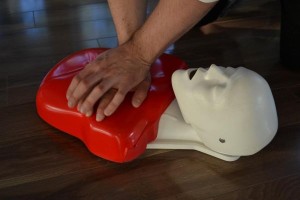
On the scene of an injury or any ill condition, the first aid personnel asks the nature of the reason for the seeking of medical assistance. As one of the protocols learned in first aid training, the trained first aid personnel (in other cases, a clinician or trainer) asks the injured or ill person his/ her primary complaint.
The primary complaint focuses on the injured individual’s perception of the current injury. Questions should be phrased to allow the individual to describe the current nature, location, and onset of the condition. The following questions could be asked: What is the problem? What hurts? When did the injury occur? What activities or motions are weak or painful?
It is important to realize that the individual may not wish to carry on a lengthy discussion about the injury or may trivialize the extent of pain or disability. The examiner must be patient and keep the questions simple and open-ended. It is advantageous to pay close attention to words and gestures used by the patient to describe the condition, because these may provide clues to the quality and intensity of the symptoms.
After identifying the primary complaint, the next step is to determine the mechanism of injury. This is probably the most important information gained in the history. For an acute injury, questions that might be asked include:
- First, how did the injury occur? What did you do? How did you do it?
- Second, did you fall? If so, how did you land?
- Third, were you struck by an object or another individual? If so, in what position was the involved body part, and in what direction was the force?
For a chronic nature, potential questions include:
- How long has the injury been a problem?
- Do you remember a specific incident that initiated or provoked the current problem?
- Have there been recent changes in running surface, shoes, equipment, techniques, or conditioning modes?
- What activities make the condition feel better?
- What activities make the condition feel worse?
It is important to visualize the manner in which the injury occurred as a way to identify possible injured structures. The information obtained pertaining to the mechanism of injury directs the objective evaluation.
In assessing the primary complaint of an acute injury, it also is important to determine if the individual experienced other unusual sensations at the time of injury. Specifically, the following questions should be asked:
- Did you hear anything?
- Did you feel anything?
The report of particular sounds and feelings at the time of injury can provide valuable input regarding the type of injury and the structures involved. Hearing a “pop” is characteristic of a rupture to a ligament or tendon, and hearing a snapping or cracking sound may suggest a fracture. Unusual feelings can be presented in a variety of ways. For example, having sustained a tear to the anterior cruciate ligament, an individual may report a feeling of the knee giving way. Following a rupture of the Achilles tendon, an individual may report a feeling of being shot or kicked in the lower leg.
Related topics you can read:
